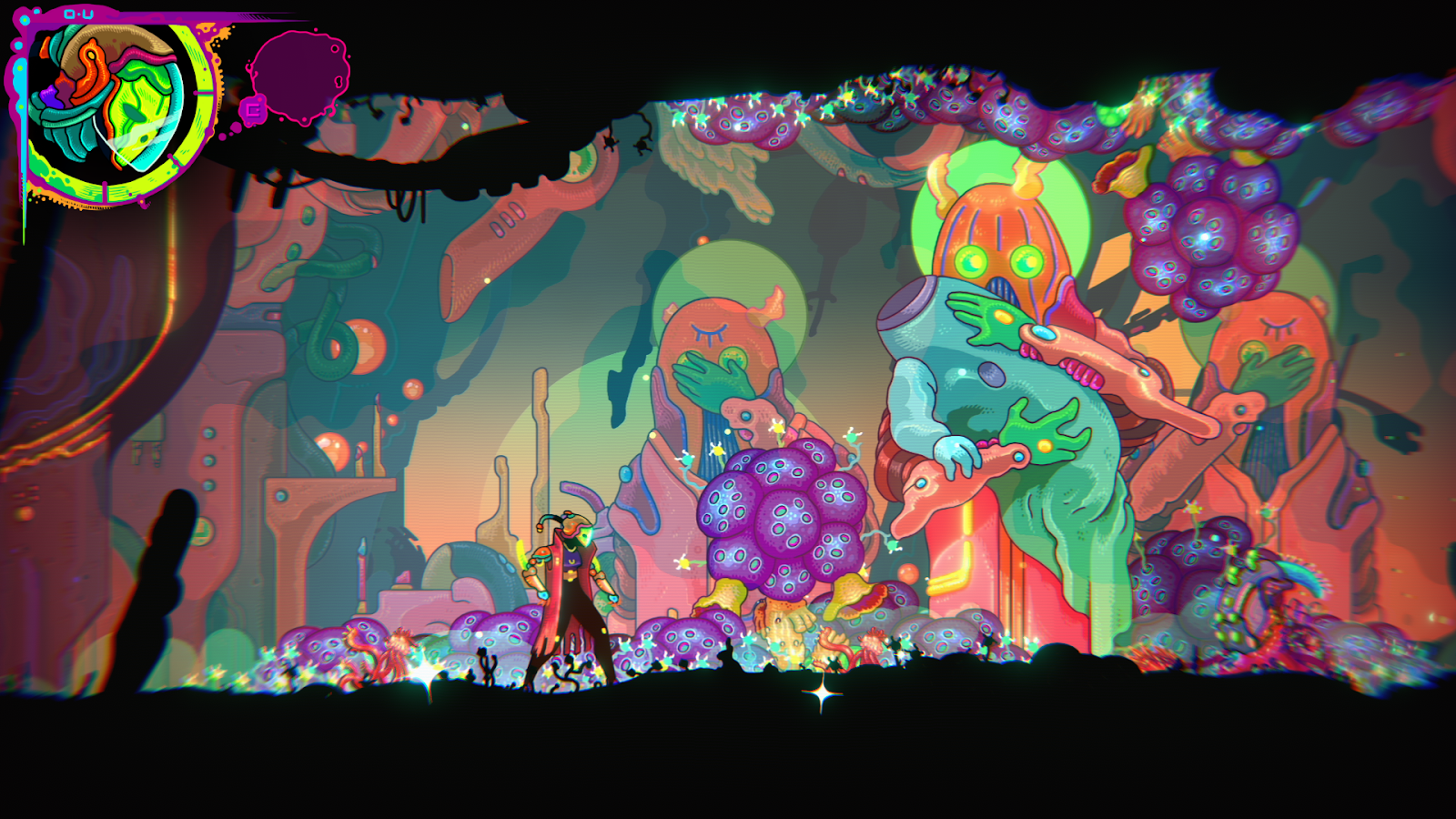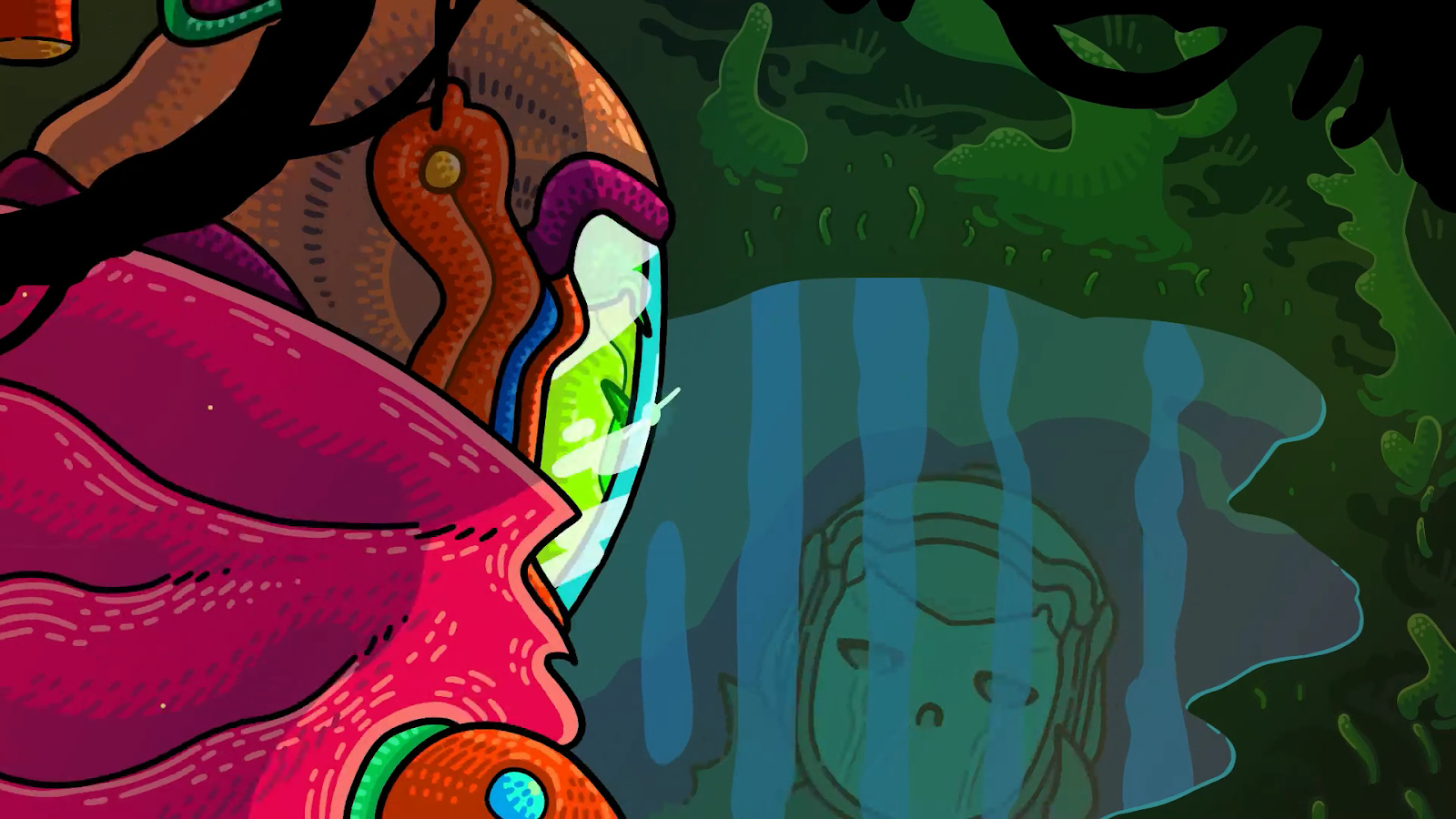PC Gamer's got your back
What is it? A colorful metroidvania about growing trees in a psychedelic space uterus.
Expect to pay: $25
Release date: Out now
Developer: Hadoque
Publisher: Kelper Interactive
Reviewed on: Windows 10, AMD Ryzen 5 PRO 4650G, 16GB RAM
Multiplayer: No
Steam Deck: Playable
Link: Steam
Wandering Ultros’s cosmic uterus in search of an eldritch monster I had to stop from being born, I couldn’t shake the feeling that I’d been there before. The game is a metroidvania, and for a while it seems like almost exactly what you’d expect (minus the whole uterus thing). But just as I started to get comfy in the embrace of genre familiarity, the creature hatched, killed me, and sent me blasting back in time to the beginning.
Ultros is a time-loop game, but it's more than just time that loops. Everything does, swerving and connecting back to each other to convey a singular vision in this circle of a game.
Ultros is blasted with vibrancy, a perpetual explosion of acid hues swirling in hypnotic patterns. Red globby juices dribble down iridescent orange ivy; dark purple liquid submerges holy green statues; a giant tree with glowing autumn leaves bears searing blue fruit with eyes. Every inch of the game is a joy to behold when the backgrounds aren't packed with so much handmade love that I lose track of what’s decoration and what isn’t. Several accessibility options exist to assuage this by blurring or desaturating the background, but hours in I still caught myself trying to hop onto pillars that weren’t there.
I found it hard to care too much about the occasional whiffed jump when everything looks so nice, especially when accompanied by a perfectly in-step soundtrack of ambient ragas: shimmering violins, muted saxophones, and humming electronics giving way to discordance in Ultros's most intense moments, casting a mystical, reverent air over the entire experience.
Which is appropriate given the story, an obscure time-looping Zen journey that cuts the preamble and drops you into an ocean of alien terminology. The Sarcophagus, Shamasal, Cacomin, Marduk, Cortex… if you’re playing casually don’t expect to understand what’s going on. The writing doesn’t exactly inspire a desire to learn more. It oscillates between twee stammering and portentous Proper Noun poetry, often leaving me wanting less of the already scant dialogue, but if you’re willing to push through and dig, the story here is well considered and filled with plenty of heady ideas. It’s a story of cycles and symbiosis, of death and rebirth and the delicate balance between everything that is.

I started to pay attention to the closeness of things, the interactions between different plants, and the shape of the walls and floors surrounding me.
You can see the circles in it everywhere. Ultros is deeply invested in its own thematic cohesion, with a time loop regularly sending you back to the start, left to regain abilities (which mercifully doesn’t take long) and explore different paths. The opening area turns into a home base as you repeatedly meet the end. It’s surprising, then frustrating, and finally comforting. You are like the big creature you’re trying to stop and the little creatures that get in your way, destined to be born and to die.
Ultros hosts a whole zoo of gnarly bug-like aliens. Killing them is as easy as it is flashy: combat is a fast-paced rush of combo strings, dive kicks, and parries that explode creatures into scraps of meat to be eaten for health and nutritional points, the game’s equivalent of EXP. On their own these baddies seem like punching bags for your flurry of attacks, but there’s a twist. Beating them without using the same attack twice will result in higher quality meat with significantly boosted effects.

For a while, I mindlessly slaughtered the first enemy in the game’s many loops, thinking it was just a tutorial monster. But thanks to the promise of premium meat, I started reconsidering my relationship with it, just as I did with all of the alien baddies populating the map over the course of the game. Instead of hacking and slashing, I observed and planned, turning encounters into fast-paced puzzles, and the reward was a sense of closeness to that initial enemy, its life going less to waste. It doesn’t entirely work—the movelist feels slightly too small with sticky controls that can lead to an unintended wall jump at critical moments, but by the end I looked at all monsters I once slaughtered and thought, "Hey, this multi-eyed abomination is kinda cute!" and tried to let them live instead of farming their flesh.
The same consideration can be found in gardening, the big side system. Scattered across the map are patches of land where you can plant a variety of seeds to sprout into fruit-bearing trees. At the start these trees can be almost completely ignored, but by the end they transform into Ultros’ greatest highlight: a series of delightfully ramshackle puzzles of farming and gene-splicing that made me feel like I'd grown my own solution instead of finding the one correct answer. Dig up a seed, switch it with another, graft a branch from another species, and bend it like a bonsai to use its petals to platform across a pit. Before I knew it, I was staring at the environment in a whole new way, changing the map through growth instead of destruction, upholding the balance of this delicate ecosystem.

My connection with the world didn’t stop there. Eventually, I was able to start building a network, represented as a glowing tether, by connecting every flower in the game, which expands up through the map like the branches of a tree, a task necessary to see the true ending. This completely flipped my relationship with the game’s space on its head; areas once run through without a second thought becoming elaborate puzzles. I started to pay attention to the closeness of things, the interactions between different plants, and the shape of the walls and floors surrounding me. I wasn't initially motivated much by the promise of a fuller finale, but I got so caught up in the Zen thrill of rediscovering the map that I circled around to it anyway.
Ultros is easy enough that you rarely have to fully engage with its most interesting mechanics, and its writing struggles to effectively convey its lofty ideals. But the lines still connect together at the end, turning this metroidvania into a beautiful, circular experience of presence and balance. It’s a game that wants you to see the world differently when you finish it, and the way everything is connected. If nothing else, what other game lets you take a stroll through an umbilical cord?
Baxter Burchill, a self-described "lazy son of a gun who writes for fun," is a hobbyist writer and English teacher living in Japan who loves helping others find great art nearly as much as he loves vomiting onto a page.



